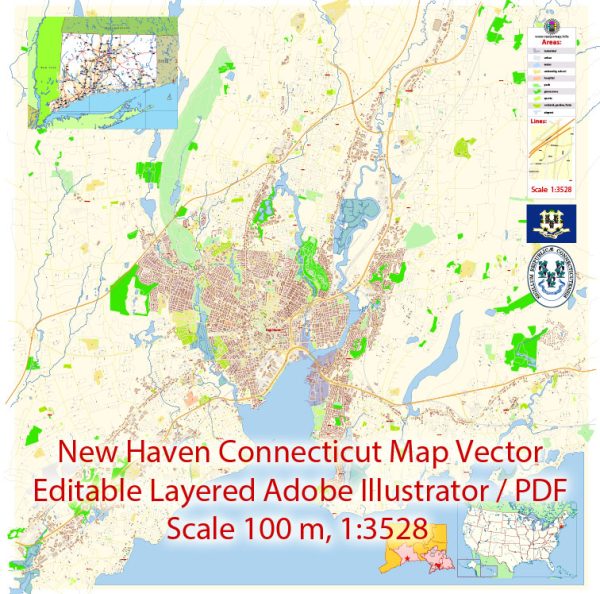New Haven, Connecticut, has a rich history of urban development that spans several centuries. Here is an overview of key points in the city’s history:
- Colonial Era (1638-1776): New Haven was founded in 1638 by English Puritans led by John Davenport and Theophilus Eaton. The original nine-square grid plan, designed by surveyor John Brockett, served as the basis for the city layout. The area grew as a major port and trade center during the colonial period.
- Early Industrialization (Late 18th Century – Early 19th Century): With its strategic location along Long Island Sound and well-established port facilities, New Haven became a hub for shipping and trade. The completion of the Farmington Canal in 1828 and later the arrival of the railroad in the 1830s further facilitated industrial and economic growth.
- Expansion and Industrialization (Late 19th Century): The late 19th century saw significant industrialization in New Haven. The city became a center for manufacturing, particularly firearms, carriages, and corsets. This period of economic prosperity led to an increase in population and the expansion of the city’s infrastructure.
- Urban Renewal and Redevelopment (Mid-20th Century): Like many American cities, New Haven experienced urban decay in the mid-20th century. The post-war period saw a decline in industry, and suburbanization led to population shifts. In response, the city implemented various urban renewal projects, including the construction of the Oak Street Connector and the development of the Yale-New Haven Medical Center.
- Civil Rights Movement and Social Change (1950s-1960s): New Haven played a role in the civil rights movement, with events such as the Black Panther trials in the 1970s drawing national attention. The city also faced challenges related to racial tensions and economic disparities during this period.
- Yale University’s Influence: Yale University, founded in 1701, has been a significant factor in New Haven’s development. The university has not only contributed to the city’s cultural and intellectual vibrancy but has also been involved in various urban development initiatives.
- Recent Development and Revitalization (Late 20th Century – Present): In recent decades, New Haven has undergone revitalization efforts, including the development of the Long Wharf area, the expansion of biotechnology and healthcare industries, and the renovation of historic neighborhoods. The city has focused on preserving its historical character while promoting economic growth and community development.
- Cultural and Educational Hub: New Haven is known for its cultural institutions, including theaters, museums, and music venues. Yale University’s presence contributes significantly to the city’s cultural and educational scene.
- Challenges and Future Prospects: Despite progress, New Haven faces challenges such as economic inequality, crime, and issues related to housing. Ongoing efforts focus on addressing these challenges and fostering sustainable development.
New Haven’s history reflects the broader trends of American urban development, including industrialization, suburbanization, and urban renewal, while also highlighting the unique contributions of the city’s cultural and educational institutions.


 Author: Kirill Shrayber, Ph.D.
Author: Kirill Shrayber, Ph.D.